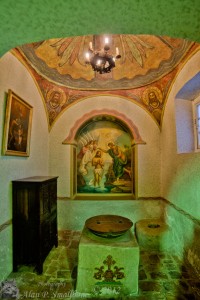Here is a shot from inside the San Gabriel Mission, this is a small alcove off of the main church interior. The green color comes from the sun shining through green tinted windows up on on the walls of the main chapel. Why green I do not know but it made the whole inside of the church cast in a green light. The San Gabriel Mission was the 4th mission in California to be built, although it was not known as California then. It was founded on 8 September 1771, it is filled with all kinds of interesting historical pieces. The photo was taken handheld with a Canon 1Dm4, Samyang 14mm f2.8 at f.28 and ISO 3200.
-
Recent Topics
Calendar
April 2025 M T W T F S S 1 2 3 4 5 6 7 8 9 10 11 12 13 14 15 16 17 18 19 20 21 22 23 24 25 26 27 28 29 30 Categories
Tags
Astronomy astrophotography CA Colorado commentary composition desert Eastern Sierra ebook fall fall colors flowers Fuji X-series gardens gear HDR image of the week Laguna Beach landscapes Los Angeles macro moon Mt. Whitney nature night photography opinions Page panorama panoramas photography Printing reviews sandstone San Juan Mountains sharpening snow Sun sunset Vision winter X-E2 X-Pro 1 X-T1 Yellowstone NP YosemiteRecommended Links


